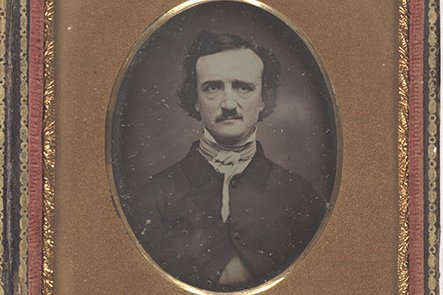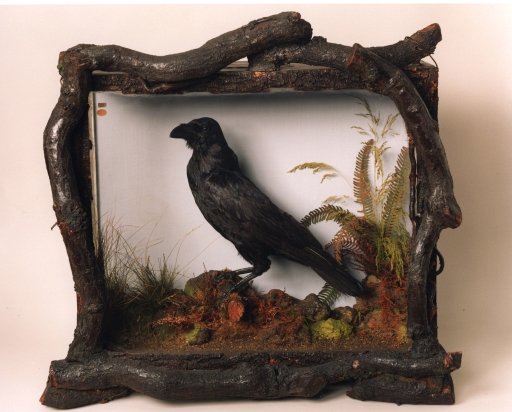
October 15, 2015
 Daguerreotype/Free Library of Philadelphia
Daguerreotype/Free Library of Philadelphia
Philadelphia is where Edgar Allan Poe's literary genius flourished.
Halloween is Edgar Allan Poe’s season.
It's the ideal time to celebrate Poe’s troubled literary genius, forever cemented while living and working in his adopted city, Philadelphia, from 1837 to 1844. These incredibly productive six years made him the most influential writer to have worked in the city.
The time he spent here “was a period of huge productivity for him,” said Harry Lee Poe, a professor at Union University in Tennessee and the author of two scholarly books on his distant cousin. Though he had what the professor calls "a burst of poetic genius" in New York soon after, Poe did more work and wrote more short stories in Philly.
“It was a vigorous time for him. Philadelphia was a cultural center, not just of literature, but also of art, architecture, gardening and music.
"He was a part of a literary circle in Philadelphia. That was an important part of who he became as a writer. He became Charles Dickens’ friend there. It was a literary scene without the jealousy of New York,” professor Poe said.
Lifted by the local literary scene, Poe, who edited two prominent magazines during his time in the city, went where writers before him had never been. He perfected psychological thrillers, writing "The Cask of Amontillado" and "The Black Cat" while in Philly. Poe also became the first to write a story from the perspective of the tormented mind of a killer while in Philly.
“It was a new kind of thing,” said professor Poe. “He explored meaning and purpose. He moved past gratuitous violence to examine mystery and meaning.”
Poe crafted many gloomy Gothic tales of revenge, dissolution, symbolism, horror and claustrophobic creepiness in Philadelphia, tales such as "The Pit and the Pendulum, " "The Masque of the Red Death," “Fall of the House of Usher,” and “The Gold Bug.” He pioneered exploring insanity, disease and depression (both realities in his own life) in the stories he wrote here.
The author also created the first modern mystery story, “Murders in the Rue Morgue," and wrote a lightly fictionalized version of a true-crime tale, “The Mystery of Marie Roget,” another first.
In the three mystery tales he wrote here, Poe invented the first recurring detective figure, too. His C. Auguste Dupin became the role-model for Sherlock Holmes and hundreds of fictional detectives who have come since.
He also penned one of the first examples of science fiction, “A Descent into the Maelstrom” while in the city and wrote several more sci-fi tales while here.
“The genre did not even have a name when he first wrote it,” said professor Poe.
And while the final version of his single most famous work was not completed until he left the city for New York, Poe conceptualized the poem, “The Raven” while in Philadelphia.
In fact, his meeting in Philadelphia with novelist Dickens, who owned a pet raven named Grip, led to the poem’s central image. A raven is also featured in Dickens' novel, “Barnaby Rudge,” which Poe, a scathing literary critic, reviewed and admired.
The two met twice during Dickens' short time in the city, but they carried on a correspondence for years. Scholars believe the writers influenced each other's work for years. Professor Poe even said his ancestor was partially a model for the character "David Copperfield."
Poe conceived of “The Raven” here, too, watching as tuberculosis ravaged his beloved wife, “watching her die a little bit every day,” professor Poe said.
Of the poem's theme Poe once said, "The death of a beautiful woman, is unquestionably the most poetical topic in the world."
The one surviving Philadelphia home Poe rented, at 532 N. 7th Street, now operates as a National Historic Site overseen by the National Park Service.
Joanne Jacobs, 64, and her granddaughter, Alexis Nash, 13, recently piggybacked a trip to the Poe House with their visit to Independence Hall.
Jacobs hadn’t previously realized Poe had lived in Philly, recalling only his mysterious death in Baltimore. Her granddaughter said it was cool that the author invented the detective mystery story while living here.
The Park Service has two upcoming events to mark Poe's time in Philadelphia. This Friday the Poe House will be open late, from 7 p.m. to 9 p.m., with readings featured. A Poe character will make a special appearance at the Independence Visitor Center Oct. 31 and Nov.1.
Colonel Richard Gimbel, of Gimbels Department Store fame, once funded the Poe House before giving it to Philadelphia, which turned it over to the Park Service.
Among the furnishings Gimble used for the home is Grip, mounted and now on display at the Philadelphia Free Library’s Rare Book Room -- a fine place to ponder quaint and curious volumes.
